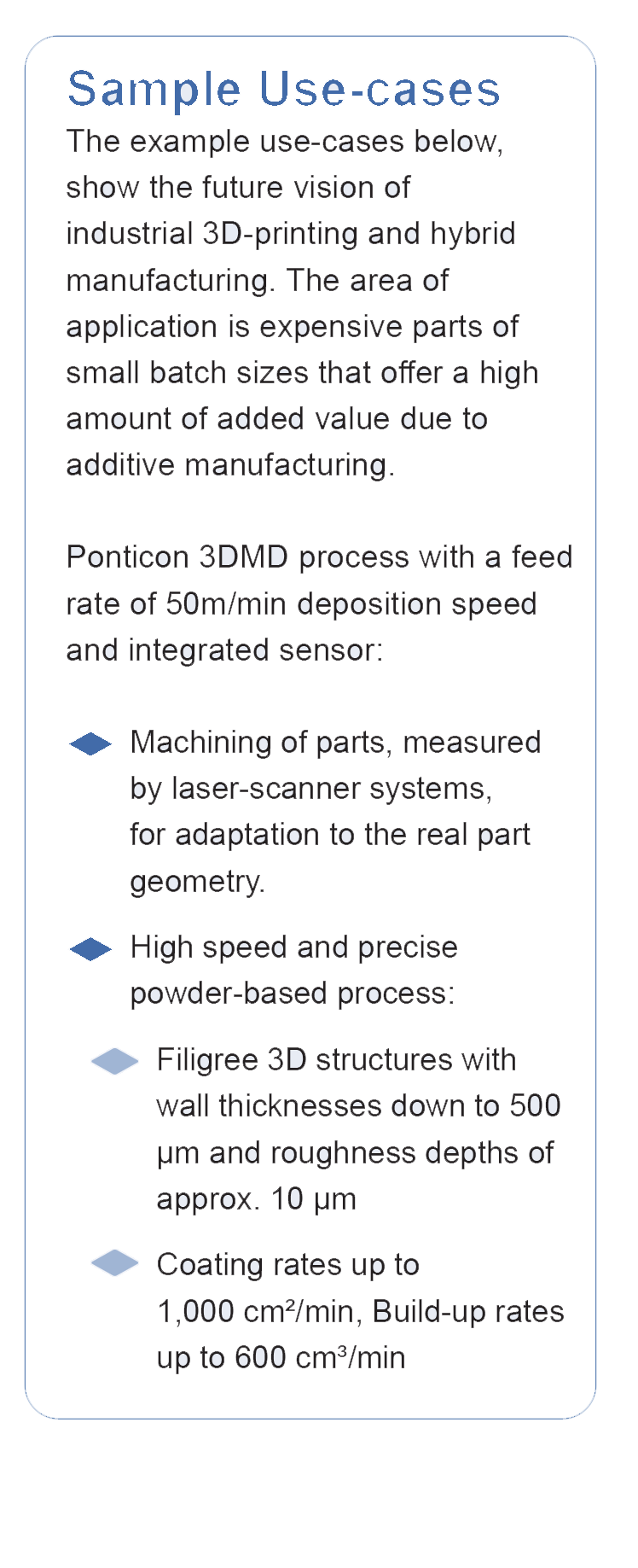A PATH TO SUCCESS

Additive Manufacturing (AM) has always been considered a promising, innovative technology. It still is, but it is no longer a “new” technology. The early hype has ended, and the industry is now calling for robust and resource-efficient technology that can be seamlessly integrated into existing production lines. Today, AM is mostly used for small-sized batch production, prototyping and certain niche applications. Ten years ago, AM promised to disrupt the production technology market. This has not happened, for example the promised right-first-time parts are nowhere to be found. Moreover, complex hybrid processes for combined additive and subtractive manufacturing are not yet the “state-of-the-art” in manufacturing. So, what path must the additive manufacturing community take to ensure the success and prosperity of the technology?
Locating Additive Manufacturing within the Digital Transformation
The continued digital transformation in production is essential if the economy is to keep up with future challenges such as demographic change. In certain sectors of the production industry, it is hard to find personnel for manual labor as well as workers with the knowledge and skills for operating the latest machines and software. Thus, an important goal in the next few years is to develop software that fills the knowledge gap and increases interoperability between humans and machines.
The lack of skilled labor also holds back productivity and impairs manufacturing quality. If more parts of the process chain can be digitalized and automated, less labor is required, which alleviates the economic pressure on the whole production line. The whole process chain from idea to finished product must be analyzed and digitalized in order to effectively optimize the use of resources and guarantee product quality. Well-known concepts like the digital twin and the simulation of machines and processes as well as the redesign of existing products need to be integrated in additive production processes. Only a seamless digital process chain will unlock the full capacity and potential of AM for the future world of production.
Incorporating Design Thinking
Design thinking is a human-centered approach to innovation that draws from the designer’s toolkit to integrate the needs of people, the possibilities of technology and the requirements for business success. In the context of AM, the inclusion of additional or improved functionality (e.g. cooling channels in tooling) has added significant value to products, and lightweight (e.g., topology optimized) designs have proven successful. To ensure continued improvement, a new methodology for constructing additive parts must be developed. Saving the product-relevant model data as 3D annotations would enable a seamless CAM process as well as full automation. Different design variants and possible features for individualization (e.g. in orthopedics) need to be considered during the design phase.
Expanding the Areas of Application & Quality insurance
For expanding production, it is essential to manage expectations to ensure that additive manufacturing can meet them. Realistic scenarios for additive manufacturing must be identified. Good and reliable software tools that help with the identification of use cases can simplify and accelerate this step. This is especially true for serial production involving large batch sizes. However, smaller batch size production for customer tailored parts remains the future driver in additive manufacturing.
Repair cases will still play a crucial role for certain AM technologies (laser direct energy deposition, wire arc additive manufacturing), even though the CAD/CAM environment will be more automated compared with today’s processes.
The scope of hybrid manufacturing can be extended to remanufacturing old/scrap parts. This boosts the resilience of the production industry. It is an extension of classic approaches to remanufacturing and thus a part of the circular economy, where the application of data-based methods for decision-making and process planning also makes implementation planning more efficient.
Rapid prototyping is still a production field where AM shines. The aim in this area is to increase the quality (e.g. geometrical dimension) of parts that are built for the first time. This is only possible if the phenomena that lead to distortions or build errors are either physically modeled and the process planning is adapted accordingly, or with an improved in-line sensor feedback loop where the relevant process parameters are measured and the toolpath or process parameters are adapted if certain critical thresholds are exceeded. The parameters measured obviously vary according to the production technology used.

The in-line measurement can also be used to generate data for the digital twin of the product and for digital quality assurance. If implemented correctly, this feedback loop positively affects the process chain and leads to more dynamic processes and consistently high-quality parts.
In addition, automated data logging enables the use of reinforced data-based learning methods.

